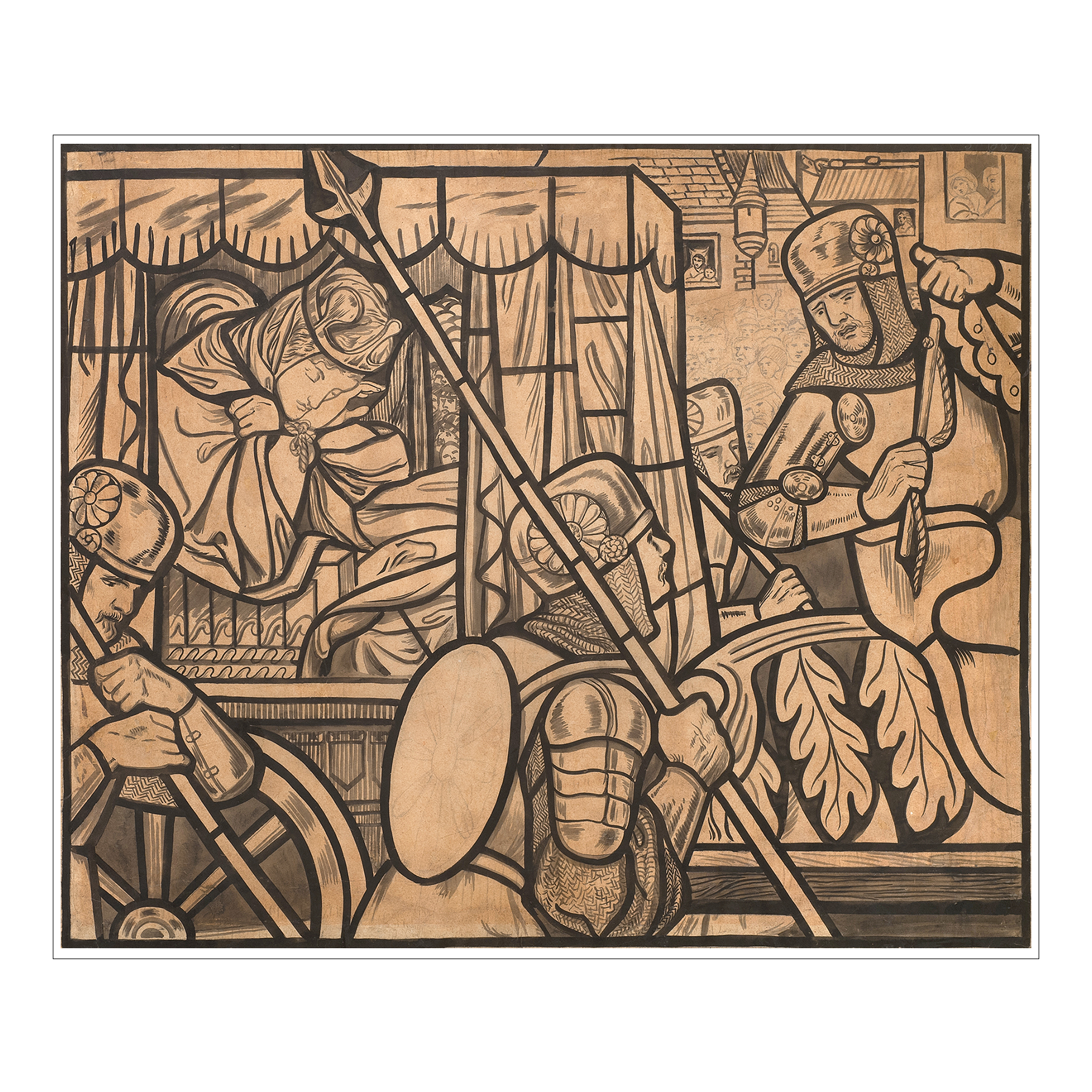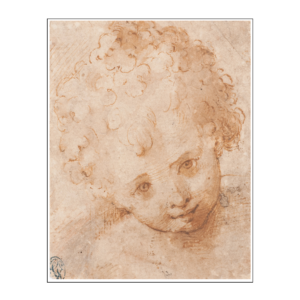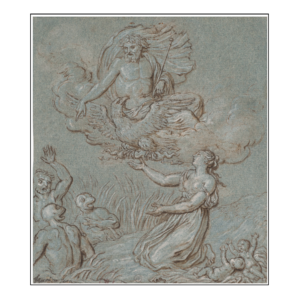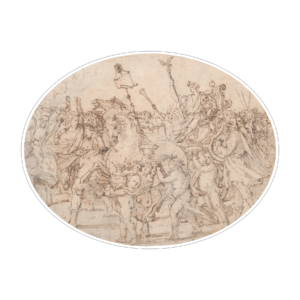Gabriel Dante Rossetti
Londres 1828- Birchington-on-sea 1882
and Morris, Marshall, Faulkner and Co, 1862
Princess Sabra being led to the Dragon
Pen and India ink on tracing paper.
499 x 623 mm – 19 5/8 x 24 ½ in.
Provenance – Robinson and Foster, London, King Street, on 16/01/1941.
Sotheby’s, London 14 June 1977, lot 5, illustrated and sold with another composition as Morris, Marshall, Faulkner and co.
This drawing is a tracing used for the creation of a stained glass panel. It bears the precise line of the network of leading to be transferred using carbon sheets onto strong manila paper, the cutting cartoon which will be trimmed to serve as the shape for cutting the glass.
The piece of stained glass made from this drawing forms part of a series of six, representing the story of Saint Georges and Princess Sabra, now at the Victoria and Albert Museum in London (n° E-2787-1927).They were produced by the firm Morris, Marshall, Faukner and Coto adorn windows at Harden Hall at Bingley (West Yorkshire). Another version of the stained glass series is at Cragside, Northumberland.
Six original designs by Dante Gabriel Rossetti(London 1828 – Birchington-on-Sea, Kent 1882)are now at the Birmingham City Museum and Art Gallery. Four tracings after these drawings are also at the V&A: The Skulls Brought to the King; St. George slaying the Dragon; The Marriage (E 1840-1946 à E 1843-1946, gift R.J. Dyson)
Our drawing as well as the one with which it was sold in 1941 and again in 1977 are therefore the two subjects that complete the V&A series. Of similar dimensions and with identical techniques, they are more schematic than the Birmingham drawings since they are working drawings, carefully conserved in the workshop with a view to creating possible copies or repairs. It is hard to know exactly how the work was divided between the artist and his workshop in the creation of the tracing: some areas, which are more schematic seem to come from the studio, while others, such as the crowd in the background are more carefully worked on our drawing and seem to be by the artist’s hand. Whatever the case may be, the composition was repeated under the artist’s precise control since it is a stage that allows changes to be introduced, elements can be added or removed without the entire composition having to be reworked.
The legend, which is medieval in origin, is known in several versions, including that of Jacobus de Voragine in The Golden Legend. The story is about George of Lydda, a young Christian nobleman and officer in the Roman army who saves a princess who had been offered as a sacrifice to a dragon. Out of gratitude, the princess and her family convert to Christianity. Greatly inspired by this tale, the Pre-Raphaelites illustrated it on several occasions: William Morris for example created a cabinet based on ink drawings (Victoria &Albert Museum, London, n° E-2787-1927) and Edward Burne Jones painted a series in oil, including the Princess Sabrain the Musée d’Orsay.
Condition report – Laid down on paper. Some small tears and a few old fillings.





